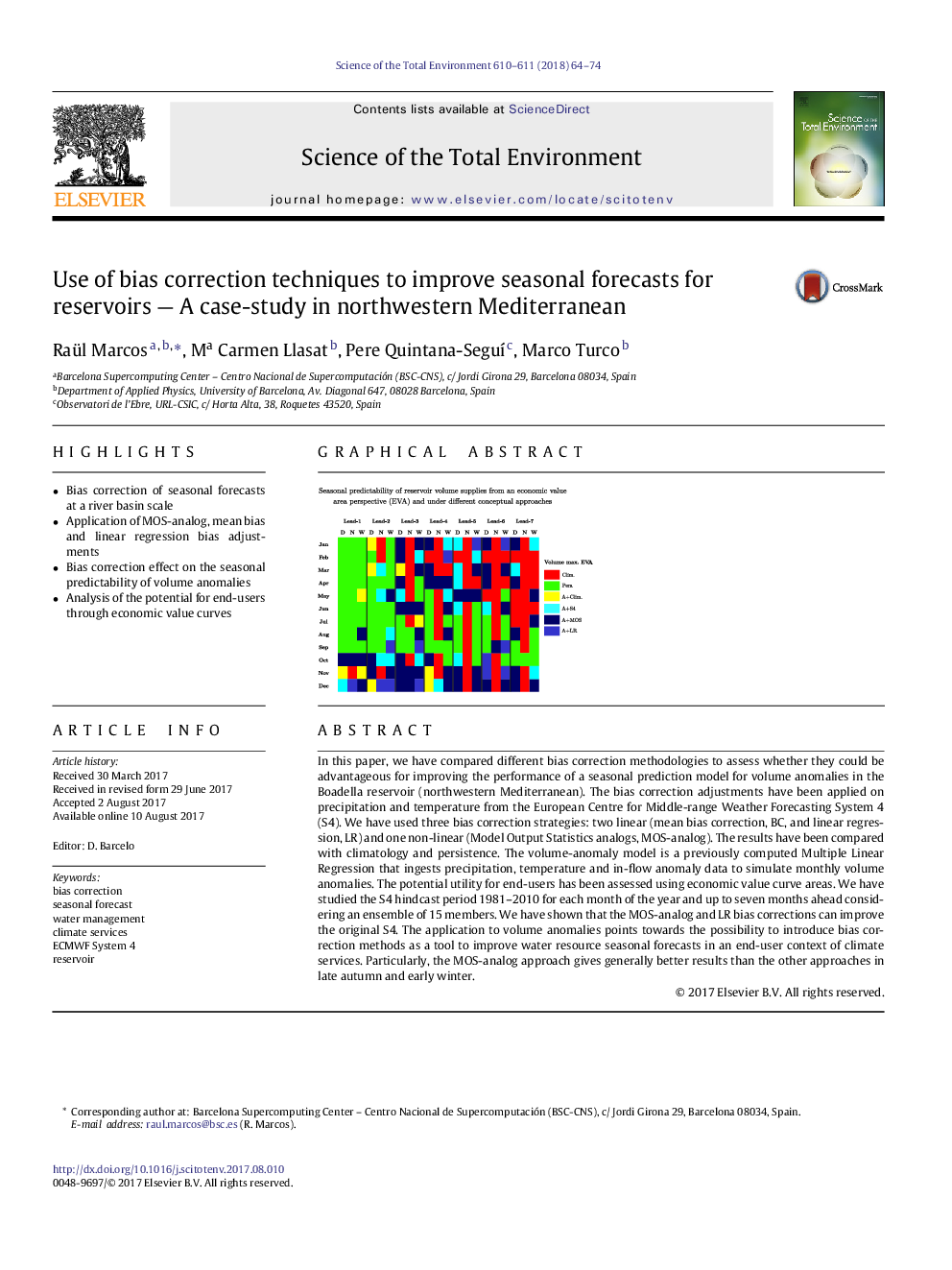| کد مقاله | کد نشریه | سال انتشار | مقاله انگلیسی | نسخه تمام متن |
|---|---|---|---|---|
| 5750172 | 1619692 | 2018 | 11 صفحه PDF | دانلود رایگان |
- Bias correction of seasonal forecasts at a river basin scale
- Application of MOS-analog, mean bias and linear regression bias adjustments
- Bias correction effect on the seasonal predictability of volume anomalies
- Analysis of the potential for end-users through economic value curves
In this paper, we have compared different bias correction methodologies to assess whether they could be advantageous for improving the performance of a seasonal prediction model for volume anomalies in the Boadella reservoir (northwestern Mediterranean). The bias correction adjustments have been applied on precipitation and temperature from the European Centre for Middle-range Weather Forecasting System 4 (S4). We have used three bias correction strategies: two linear (mean bias correction, BC, and linear regression, LR) and one non-linear (Model Output Statistics analogs, MOS-analog). The results have been compared with climatology and persistence. The volume-anomaly model is a previously computed Multiple Linear Regression that ingests precipitation, temperature and in-flow anomaly data to simulate monthly volume anomalies. The potential utility for end-users has been assessed using economic value curve areas. We have studied the S4 hindcast period 1981-2010 for each month of the year and up to seven months ahead considering an ensemble of 15 members. We have shown that the MOS-analog and LR bias corrections can improve the original S4. The application to volume anomalies points towards the possibility to introduce bias correction methods as a tool to improve water resource seasonal forecasts in an end-user context of climate services. Particularly, the MOS-analog approach gives generally better results than the other approaches in late autumn and early winter.
Graphical Abstract146
Journal: Science of The Total Environment - Volumes 610â611, 1 January 2018, Pages 64-74
